Los Millares – 5,000-Year-Old Advanced Copper City In Europe
A. Sutherland - AncientPages.com - About 5,000 years ago, Los Millares was Europe's biggest and most important town. The ruins of the city of Los Millares are situated on a plateau at an altitude of 270 meters - a perfectly chosen strategic location near Almeria, on the southern coast of Spain.
 Credit: Museo Arqueológico Nacional de España
Credit: Museo Arqueológico Nacional de España
Los Millares' people possessed highly developed technical knowledge and introduced copper metallurgy in the Western Mediterranean Sea. They also grew farming and built a vast cemetery for collective burials.
Inhabited by approximately 1,000 people at the time of maximum splendor, the city had an extensive and complex defensive system of defensive solid walls and forts with several outposts for protection.
The site's history is not yet precisely known, but historians are sure it was abandoned about 250 years after the pyramids were built in ancient Egypt.
After many years of plunder and neglect, the city's historical importance was finally recognized thanks to the first excavation made in 1891 by two Belgian mining engineers, Luis Siret, and his brother. They became intrigued by the city's archaeological remains.
 Remains of tomb. Credits: Museo Arqueológico Nacional de España
Remains of tomb. Credits: Museo Arqueológico Nacional de España
The sparsely excavated archaeological site revealed many circular huts with a diameter of 4 to 7 meters, stone plinths, earthen floors made of rammed earth, and stone mills.
Finally, the city looked like a fortified fortress with four lines of thick walls of six-meter (20 ft). The last one was 310 meters long and 4 meters high and punctuated at intervals of twelve to fifteen meters, with a sophisticated gateway, a series of towers and 15 bunkers for outer defense, and a water cistern.
Several simple dwellings lay inside the citadel, as well as a complex structure with traces of smelting and a hall-like rectangular stone building that was probably used for inhabitants' meetings, ceremonies, and other entertainment.
 The history of the site is not yet exactly known but is known that it was abandoned about 250 years after the pyramids were built in ancient Egypt. Illustration of the village of Los Millares, the first city on the Iberian Peninsula. / IÑAKI DIEGUEZ URIBE.
The history of the site is not yet exactly known but is known that it was abandoned about 250 years after the pyramids were built in ancient Egypt. Illustration of the village of Los Millares, the first city on the Iberian Peninsula. / IÑAKI DIEGUEZ URIBE.
The discovered necropolis ('city of the dead') consists of a collective burial mound and about 100 'tholos tombs' - beehive tombs.
Similar structures have been discovered in Turkey and Greece and built with stone roofs forming a dome. An interior system comprises an atrium or hall, a corridor separated by slabs, and a circular perforated chamber about four meters in diameter lined with a slate plinth.
 5,000 year old pottery shards have been found scattered across the site.Credits: Museo Arqueológico Nacional de España
5,000 year old pottery shards have been found scattered across the site.Credits: Museo Arqueológico Nacional de España
The graves were decorated with symbolic ceramic objects, metal weapons, richly decorated ivory items, and many idols.
In excavations of some circular cabins close to the town's defensive walls, archaeologists unearthed numerous household objects such as plates, dishes, pots, traces of cheese making, arrows, and handmade clay objects.
 During excavations of some circular cabins located close to the defensive walls of the town, archaeologists unearthed numerous household objects such as plates, dishes, pots, traces of cheese making, arrows, and handmade clay objects. Credits: Museo Arqueológico Nacional de España; Arte Historia
During excavations of some circular cabins located close to the defensive walls of the town, archaeologists unearthed numerous household objects such as plates, dishes, pots, traces of cheese making, arrows, and handmade clay objects. Credits: Museo Arqueológico Nacional de España; Arte Historia
Many unanswered questions remain regarding this most unique and mysterious city of Neolithic Europe.
How did they obtain advanced metal smelting techniques? How did the metal culture of Los Milllares evolve? What kind of danger did the inhabitants face? Was the harassment of the city's population related to the possession of copper mines and the existence of metallurgy highly developed copper?
Recent carbon testing showed that the Los Millares existed much earlier than previously thought, so the appearance of metallurgy in this area would have a local explanation by the existence and development of a previous culture (Culture of Almería), 3,000 years BC.
Written by A. Sutherland – AncientPages.com Staff Writer
Updated on September 19, 2022
Copyright © AncientPages.com All rights reserved. This material may not be published, broadcast, rewritten or redistributed in whole or part without the express written permission of AncientPages.com
Expand for referencesReferences:
G. A. Jimenez, S. Montón Subías, The Archaeology of Bronze Age Iberia: Argaric Societies
More From Ancient Pages
-
 Vesta And Her Six Vestal Virgins – Highly Venerated Goddess Of Hearth And Family
Featured Stories | Dec 24, 2019
Vesta And Her Six Vestal Virgins – Highly Venerated Goddess Of Hearth And Family
Featured Stories | Dec 24, 2019 -
 Underground Ancient City Of Kish And Its Advanced Hydraulics System
Ancient Technology | Aug 28, 2015
Underground Ancient City Of Kish And Its Advanced Hydraulics System
Ancient Technology | Aug 28, 2015 -
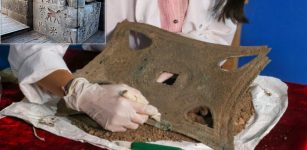 Ornamental Bronze Wall Plate Unearthed In Ayanis Castle Built By Urartian King Rusa II
Archaeology | Sep 13, 2022
Ornamental Bronze Wall Plate Unearthed In Ayanis Castle Built By Urartian King Rusa II
Archaeology | Sep 13, 2022 -
 What Were Victorian Bathing Machines?
Ancient History Facts | Jun 9, 2018
What Were Victorian Bathing Machines?
Ancient History Facts | Jun 9, 2018 -
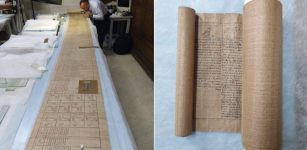 Never-Before-Seen 16 Meters Long Ancient Egyptian Papyrus Unveiled To The Public
Artifacts | Feb 21, 2023
Never-Before-Seen 16 Meters Long Ancient Egyptian Papyrus Unveiled To The Public
Artifacts | Feb 21, 2023 -
 Bertrand du Guesclin: ‘Eagle Of Brittany’ Brave, French Commander And His Clash With Sir Thomas Of Canterbury
Featured Stories | May 1, 2023
Bertrand du Guesclin: ‘Eagle Of Brittany’ Brave, French Commander And His Clash With Sir Thomas Of Canterbury
Featured Stories | May 1, 2023 -
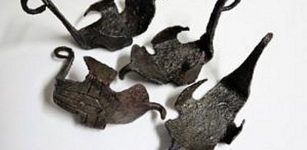 Remarkable ‘Hipposandals’ Found At Vindolanda
Archaeology | Aug 18, 2018
Remarkable ‘Hipposandals’ Found At Vindolanda
Archaeology | Aug 18, 2018 -
 Why Human Languages Can Be Likened To Branches On A Tree And Help Finding A Single Common Ancestor
Linguistic Discoveries | Sep 11, 2021
Why Human Languages Can Be Likened To Branches On A Tree And Help Finding A Single Common Ancestor
Linguistic Discoveries | Sep 11, 2021 -
 Why Did Vikings Carry Decorative Swords That Were Useless In Combat?
Ancient History Facts | Jun 8, 2024
Why Did Vikings Carry Decorative Swords That Were Useless In Combat?
Ancient History Facts | Jun 8, 2024 -
 Cinnabar And Hematite Were Used In Early Teotihuacan Murals – INAH Researchers Say
Archaeology | Aug 5, 2020
Cinnabar And Hematite Were Used In Early Teotihuacan Murals – INAH Researchers Say
Archaeology | Aug 5, 2020 -
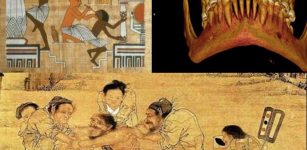 Ancient History Of Dentistry
Featured Stories | Jun 22, 2018
Ancient History Of Dentistry
Featured Stories | Jun 22, 2018 -
 Incredible CT scans show Pompeii victims ‘in good health’
Civilizations | Oct 3, 2015
Incredible CT scans show Pompeii victims ‘in good health’
Civilizations | Oct 3, 2015 -
 Nine 1,400-Year-Old Coins Belonging To Christian Pilgrims Found On The Highway To Jerusalem
Archaeology | Mar 24, 2017
Nine 1,400-Year-Old Coins Belonging To Christian Pilgrims Found On The Highway To Jerusalem
Archaeology | Mar 24, 2017 -
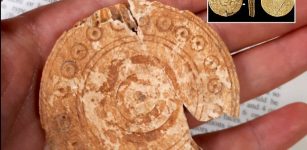 A Large ‘Tableman’ Sheds Some Light On People’s Fun And Games In Medieval Bedfordshire
Archaeology | Jun 19, 2023
A Large ‘Tableman’ Sheds Some Light On People’s Fun And Games In Medieval Bedfordshire
Archaeology | Jun 19, 2023 -
 Dracula: Cruel, Ruthless And Bloodthirsty Ruler But Not A Vampire
Featured Stories | Sep 12, 2023
Dracula: Cruel, Ruthless And Bloodthirsty Ruler But Not A Vampire
Featured Stories | Sep 12, 2023 -
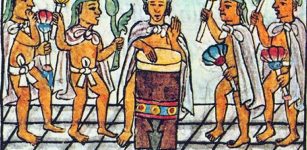 Daily Life Of Télpochcalli Students Of The Aztec Empire Was A Challenge
Ancient History Facts | Apr 20, 2020
Daily Life Of Télpochcalli Students Of The Aztec Empire Was A Challenge
Ancient History Facts | Apr 20, 2020 -
 Three Punic Wars Between Rome And Carthage Lasted Almost A Hundred Years
Featured Stories | Apr 29, 2019
Three Punic Wars Between Rome And Carthage Lasted Almost A Hundred Years
Featured Stories | Apr 29, 2019 -
 Mystery Of The Ancient Unknown Mining Civilization In North America – Connecting the Dots – Part 2
Ancient Mysteries | Apr 23, 2022
Mystery Of The Ancient Unknown Mining Civilization In North America – Connecting the Dots – Part 2
Ancient Mysteries | Apr 23, 2022 -
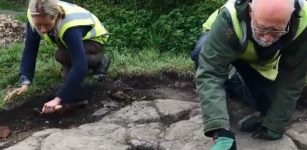 Uncovering 16th Century Scottish Royal Dockyards Used By King James IV’s Navy
Archaeology | May 24, 2018
Uncovering 16th Century Scottish Royal Dockyards Used By King James IV’s Navy
Archaeology | May 24, 2018 -
 How Can Busy People Also Keep Fit And Healthy? What The Ancient Greeks And Romans Did?
Featured Stories | Jul 16, 2024
How Can Busy People Also Keep Fit And Healthy? What The Ancient Greeks And Romans Did?
Featured Stories | Jul 16, 2024

